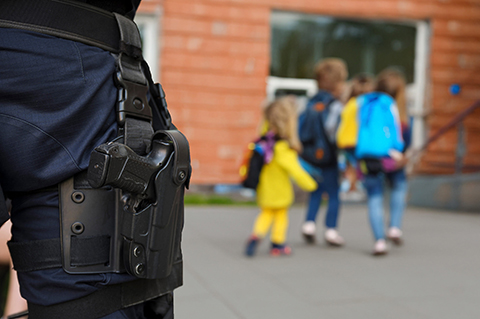
$350.00
Description
House Bill 3’s (HB-3) armed security requirement for schools is a complex mandate that presents many challenges for Texas school districts. This 3-part webinar series is for school board trustees, superintendents, school security personnel and other district leaders who would benefit from a comprehensive discussion of HB-3’s legal requirements and practical implications for Texas school districts and open enrollment charter schools.
Each part is presented by Tyler P. Ezell and Joseph L. Parks, of the Law Office of Joseph Parks, and is 1 hour and 15 minutes in length.
Part I – The ABC’s of Peace Officers, School Marshals, Guardians and Armed Guards: Comparing Options for Armed School Security Under Texas House Bill 3
Part I discusses in detail each of the qualifying armed security options available to school districts to comply with HB-3, including school resource officers, ISD police officers, contract peace officers, school marshals, “guardians” and armed security guards. The differences in training requirements, authority, typical scope of duties and approximate cost of each option are compared.
Topics Covered:
- Brief Review of HB-3’s Armed Security Provisions
- Overview of Armed Security Staffing in Texas Schools
- Peace Officers (SROs, ISD police officers, contract peace officers)
- School Marshals
- “Guardians”
- Level III Armed Security Officers
- Financial Implications / Cost Comparison
Part II – Selecting, Equipping and Training Armed School Security Personnel
Part II discusses important considerations for implementing a safe and effective armed school security program. Qualifications of applicants, personnel selection, duties and responsibilities, weapons and equipment and recommendations for training will be addressed. This webinar focuses on the use of armed school security personnel who are not law enforcement officers.
Topics Covered:
- Three-Pillared Strategy for a Safe and Effective Armed Security Program
- Applicant Qualifications and Selection
- Determining Scope of Duties of Armed School Security Personnel
- Initial and Ongoing Training
- Requirements and Options for Uniform / Attire
- Selection and cost of firearms, holsters and other equipment
Part III – Policy, Procedure and Legal Considerations
Part III discusses a number of important policy, procedure and legal considerations when implementing an armed school security program in compliance with HB-3. The differences between law enforcement and security functions, board authorization to carry firearms, policies governing use of deadly force, collaborating with local law enforcement and pitfalls to avoid when contracting with private security companies will be discussed. This webinar focuses on the use of armed school security personnel who are not law enforcement officers.
Topics Covered:
- Differences Between Law Enforcement Functions and Security Functions
- Requirements for School Board Authorization of Staff to Carry Firearms
- Texas Law and Policy Considerations in Use of Force / Deadly Force
- Legal and Operational Issues When Considering Use of Handcuffs or Peppermace by Non-Law Enforcement Personnel
- Important Contractual Terms When Contracting With Private Security Companies
- Critical Collaboration With Local Law Enforcement Agencies
